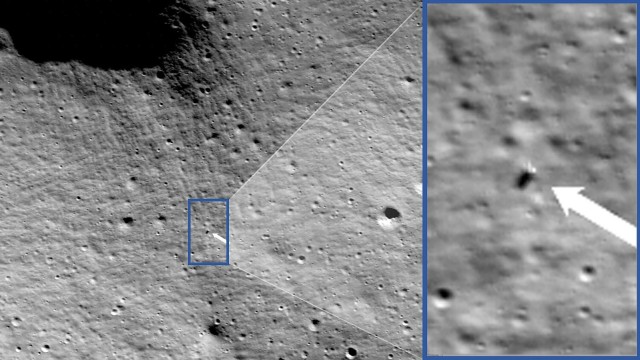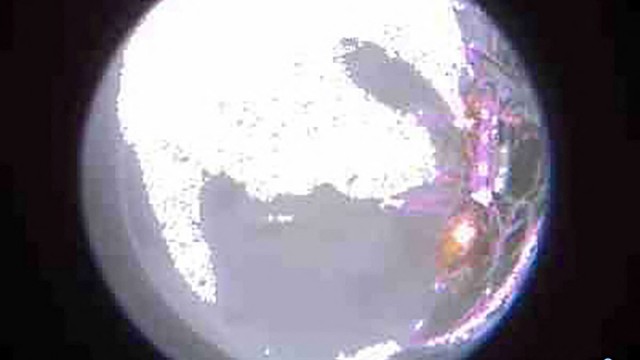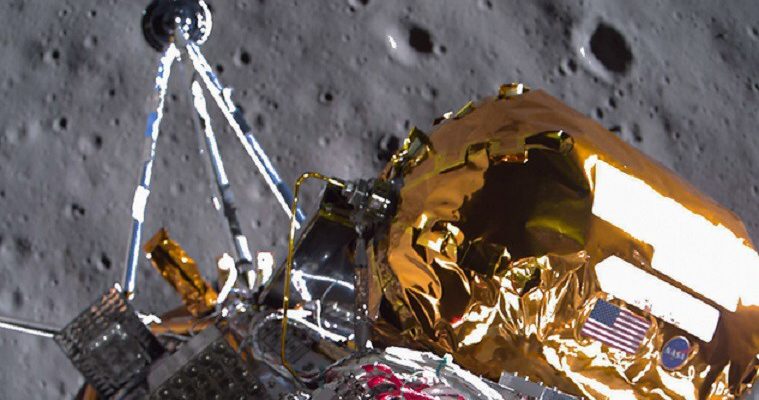A few days after becoming the first commercial probe to successfully land on the moon, the US probe Odysseus sent pictures of the surface for the first time. On Monday and Tuesday, the company Intuitive Machines published several photos. The probe took some images during its landing maneuver and another 35 seconds after landing.
“Odysseus” took this photo 35 seconds after landing – she was already lying on her side.
(Photo: HANDOUT/AFP)
There was also a flight last Friday the NASA LRO (Lunar Reconnaissance Orbiter) probe, which orbits the moon and maps itabout the area and discovered Odysseus on the ground. A recording released by NASA confirmed that Odysseus landed in a crater called “Malapert A” within a radius of 1.5 kilometers from the destination.

NASA’s LRO probe took this photo of “Odysseus” from an altitude of around 90 kilometers.
(Photo: NASA/Goddard/Arizona State University/AP/dpa)
According to the manufacturer Intuitive Machines, the probe is at the southernmost point of the moon that a spacecraft has ever reached. Scientists suspect there are numerous mineral resources and water ice in the area, which could serve as a water source for a possible future moon base.

This photo of the lunar surface was taken during the landing approach.
(Photo: INTUITIVE MACHINES/via REUTERS)
The probe, officially named “Nova-C,” is the first U.S. spacecraft to land on the moon since Apollo 17 in 1972. It is also the first private spacecraft ever to successfully land on the moon. However, the approximately four meter tall aircraft probably got stuck on a rock when landing on Friday night and tipped over on its side.
The rough landing means that the probe’s antennas are not aimed directly towards Earth, which makes data transmission more difficult. On Monday, the manufacturer said that the lander was communicating with the control center and data was being collected. While some of the probe’s solar cells received enough sunlight to power the probe despite the inclined landing position, they will soon be in shadow. Then the probe batteries can no longer be charged.
The company Intuitive Machines expects that Odysseus from Tuesday afternoon German time onwards there will be no more sunlight. This would mean the probe would stop operating two to three days earlier than expected. According to the original plan, Odysseus was supposed to provide NASA scientists with data from temperature and radiation measurements as well as soil studies for around seven days. After that, the moonlit night, which lasted around two weeks, would have shrouded the landing site in darkness and ended the mission.
The aim of the mission is to explore the area at the landing site for manned lunar missions. The company Intuitive Machines received $118 million from NASA to transport the research instruments.
Japanese lunar probe unexpectedly comes to life
While the US probe Odysseus slowly shutting down its systems, another lunar module thousands of kilometers away surprisingly came back to life. As the Japanese space organization Jaxa announced on Mondaygave her lunar probe Slim a sign of life from yourself. Slim landed successfully on the moon in January. But similar to the US probe Odysseus The Japanese probe also tipped onto its side during the landing maneuver and put its solar panels in an unfavorable position. Only a few days after landing did they generate enough electricity to charge the batteries and make contact with Earth.
The sign of life from the Japanese probe is surprising in that Slimlike that too Odysseus, was not designed to survive a cold moonlit night. The sun of the new lunar day left on the solar cells Slim now apparently waking up again. At least briefly. According to Jaxa, the temperatures were so high that communication was soon interrupted again. However, they plan to resume scientific work as soon as the temperatures have dropped.

